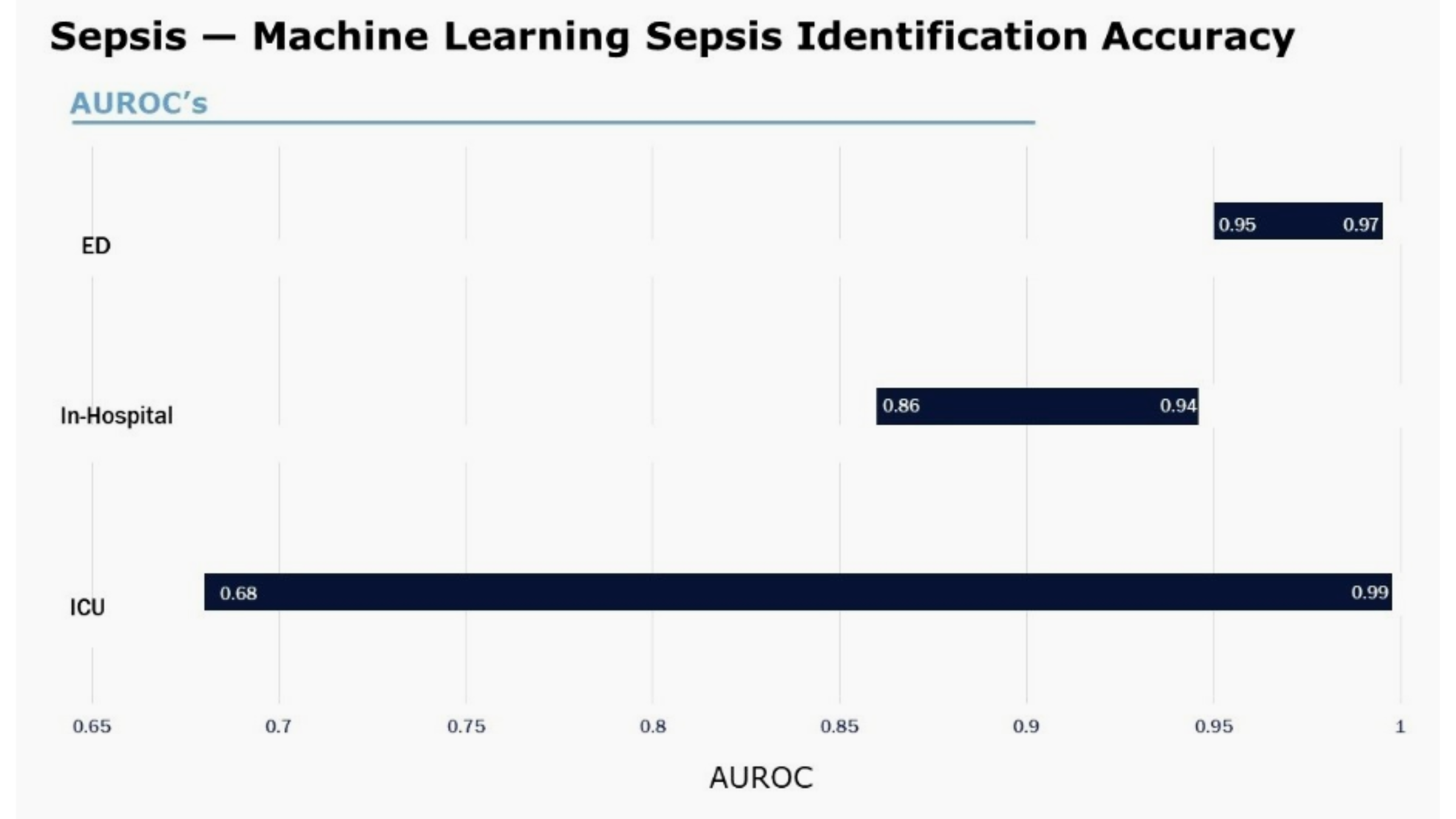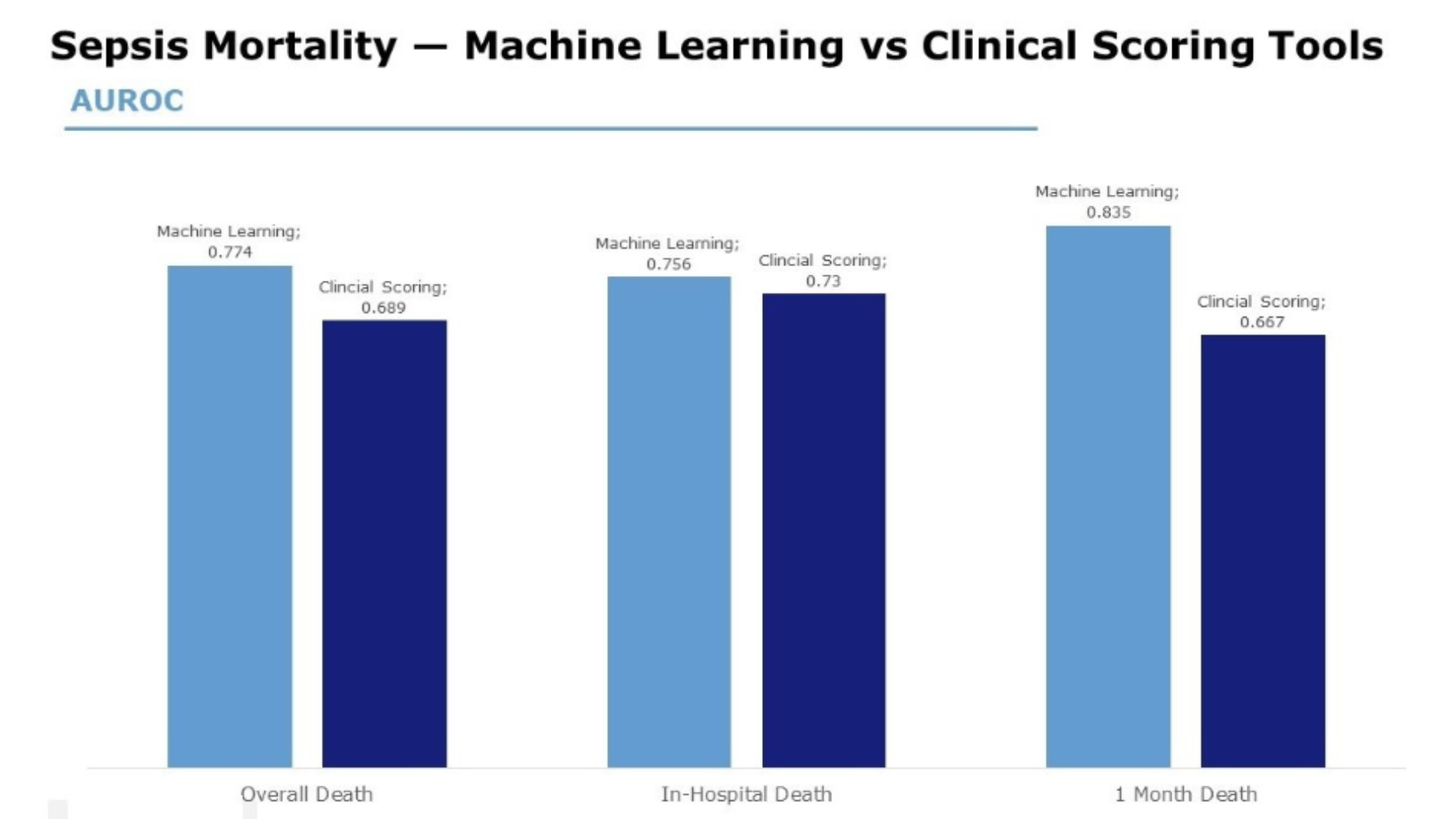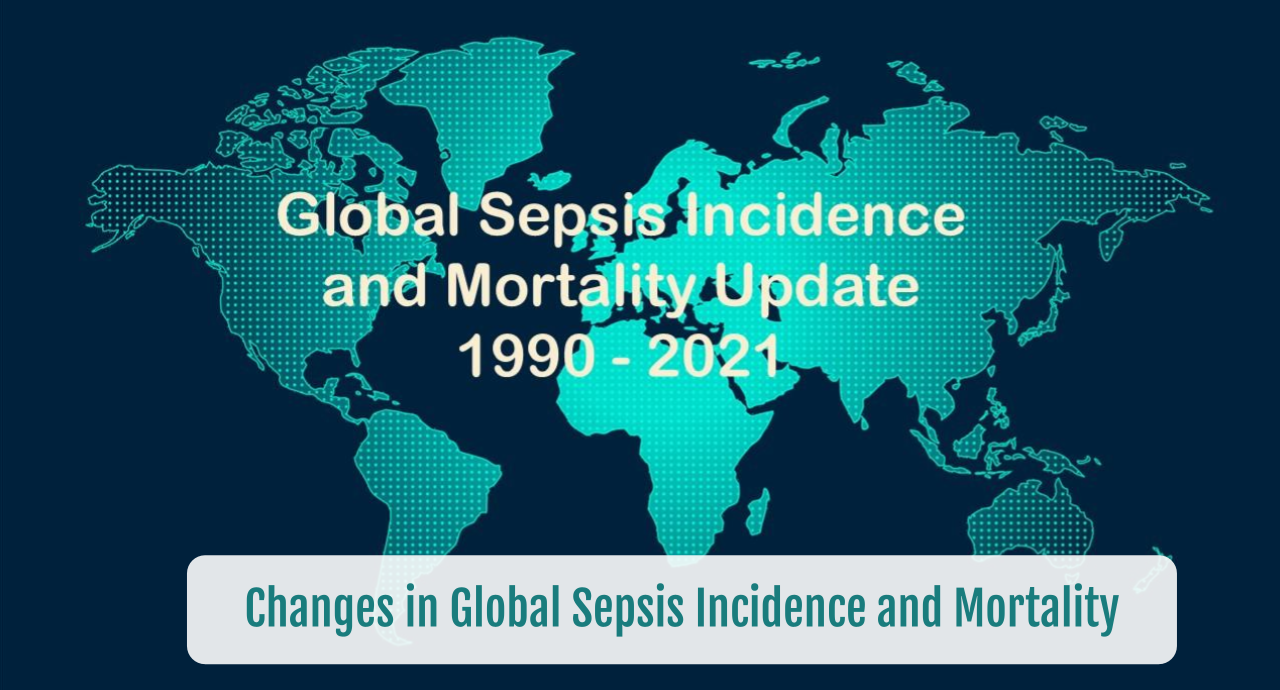Use of Machine Learning Algorithms in Sepsis
SUMMARY
-
The predictive value of sepsis clinical scoring systems is controversial but needs further improvement.
-
Machine learning methods have recently emerged in the use of predicting disease identification, diagnosis and treatment.
-
There is a current lack of comprehensive understanding of machine learning models of predictive variables.
BACKGROUND
-
Various clinical scoring systems for sepsis exist in order to help clinicians assess for sepsis and predict poor outcomes, specifically mortality.
-
Unfortunately, the predictive value of most of these tools remain unsatisfactory.
-
Machine learning has good predictive performance and has been shown useful in various predictions of disease prevention, diagnosis, treatment and prognosis for readmission and death.
-
Recently 2 major publications have comprehensively analyzed existing data of machine learning systems in determining the diagnostic accuracy and mortality risk prediction in sepsis.
RESULTS
Early Sepsis Recognition – L.M. Fleuren et al Intensive Care Med (2020) 46:383–400 https://doi.org/10.1007/s00134-019-05872-y
-
24 publications with 130 machine learning models covering ICU, ED and hospital wards.
-
Retrospective studies with substantial heterogeneity.
-
AUROC was used as the main performance metric.
-
Number of features used within the models ranged from 2 to 49.

-
Individual machine learning models have a high predictability of sepsis onset over traditional scoring tools.
-
Well controlled studies are needed to validate this initial information.
-
Risk of death was 24-34% lower with continuous infusion vs intermittent.
Machine Learning for Prediction of Sepsis Related Mortality -Y Zhang et al BMC Medical Informatics and Decision Making. 2023;23:283. Doi.org/10.1186/s12911-023-02383-1.
-
50 studies with 104 machine learning models, 125 modeling variables.
-
1.9 million patients; 270,361 (14.02%) mortality rate, with 247,519 in hospital deaths.
-
38 additional studies on the accuracy of SOFA and qSOFA in predicting short term mortality risk in sepsis patients.

- Machine learning models demonstrated favorable accuracy in predicting sepsis mortality with in the hospital and up to 1 month post hospitalization.
CONCLUSIONS
-
An improved sepsis assessment tool would enable clinicians to promptly diagnose and formulate treatment decisions.
-
Machine learning models appear to possess improved useability in terms of sepsis identification as well as mortality prediction.
-
Selection of appropriate modeling variables is a key factor in improving their predictive accuracy.
To receive articles like these in your Inbox, you can subscribe to Sepsis Program Optimization Insights.
Erkan Hassan is the Co-Founder & Chief Clinical Officer of Sepsis Program Optimization where he designs & oversees the implementation of solutions to optimize sepsis programs.
To discuss your organization’s Barriers of Effective Sepsis Care, contact Erkan by phone (844) 4SEPSIS (844-473-7747), email (erkan@spo.icu), or video chat.





